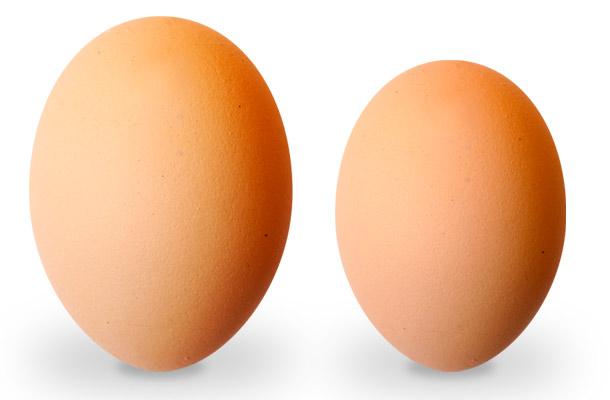A specific approach to incubating big eggs pays off
Tags: Incubation | Whitepaper
, 12 February 2015

At the onset of egg production, breeder farm managers aim for a rapid increase in egg weight to achieve the commonly accepted minimum of 50–52 grams as soon as possible. Subsequently, with proper breeder farm management, there should be a continuous and much slower increase in egg weight. Maximum acceptable weight is usually based on whether eggs still fit on the setter trays, which in practice means an egg weight of 70–75 grams.
As a general rule, the older the flock, the bigger (= heavier) the egg. However in the hatchery, large eggs (>70 grams) from breeder flocks of 50 weeks and above pose an incubation challenge. Hatch results, both in terms of hatchability and chick quality, are often not as good as those achieved with smaller eggs. The question is what can be done to maximize their results.
After peak production, while egg size continues to increase, we also see reduced shell quality (higher risk of hairline cracks), lower hygiene scores, thinner albumen, weaker germ and often also lower fertility. These factors, which will undermine hatch results, can only be prevented by good breeder farm management.
In addition, larger eggs require a specific approach during incubation. It takes longer to reach set point when a setter is loaded with big rather than small eggs, which increases total incubation time. To overcome this, big eggs from older flocks should be set earlier or, when loaded together with small eggs in the same setter, pulled last. Proper preheating inside a running setter for 5–7 hours at 77°F can partially compensate for this difference in incubation time.
Fertility is also an important point to consider. If fertility in the larger eggs from older flocks is still high, for example due to artificial insemination or excellent management on the breeder farm, we can expect total metabolic heat production to be higher during the second half of incubation than in batches of lower fertility. In single-stage incubation systems, this can be compensated for by incubating batches of fertile large eggs at a lower temperature profile, which is best achieved by setting them in a separate setter. Based on eggshell temperature, the temperature set points of the incubation program can be fine-tuned to avoid overheating the embryos.
When set together with smaller eggs, load the setter in balance, with big, highly fertile eggs positioned closest to the fan where air speed over the eggs is higher. Large eggs create a greater resistance for optimal airflow over the eggs and positioning them in this way allows the effective removal of metabolic heat.
Finally, to optimise results with larger eggs, consider egg weight loss during incubation. Poor shell quality means higher porosity and large eggs require higher relative humidity to avoid excessive weight loss and the dehydration of embryos. Conversely, reduced fertility produces less metabolic heat which requires a reduced relative humidity set point to avoid insufficient weight loss. Determining egg weight loss during incubation will help to find the right humidity set points.
Advice
- Set big eggs (old flocks) and smaller eggs (younger flocks) in separate setters.
- Consider the fertility of batches of big eggs when optimizing incubation parameters; big eggs with high fertility require a different approach to big eggs with low fertility.
- Determine eggshell temperature to avoid overheated embryos when fine-tuning the incubation temperature profile.
- Determine egg weight loss and aim for 12–13% weight loss when fine-tuning relative humidity profile of incubation program.
- Place big eggs with high fertility closest to the fan and pull these chicks last when set in the same setter as small eggs
Written by Gerd de Lange
Senior Poultry Specialist
I welcome your feedback on this article - and if you require any additional information, please don't hesitate to contact me.